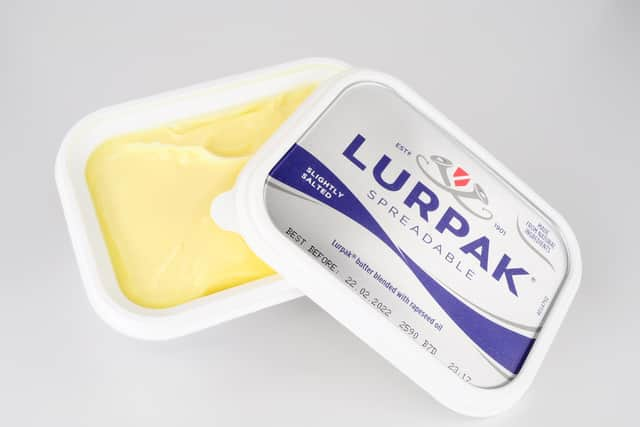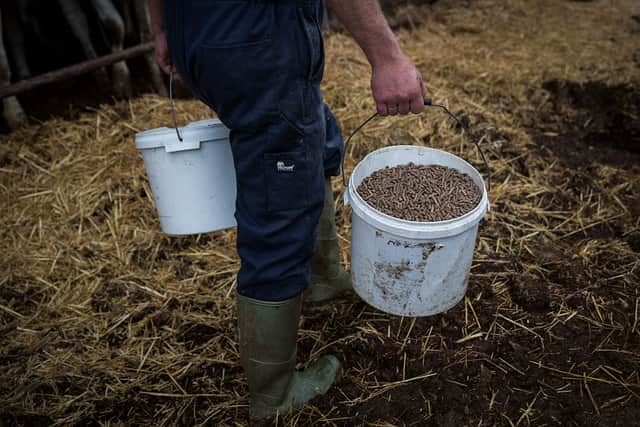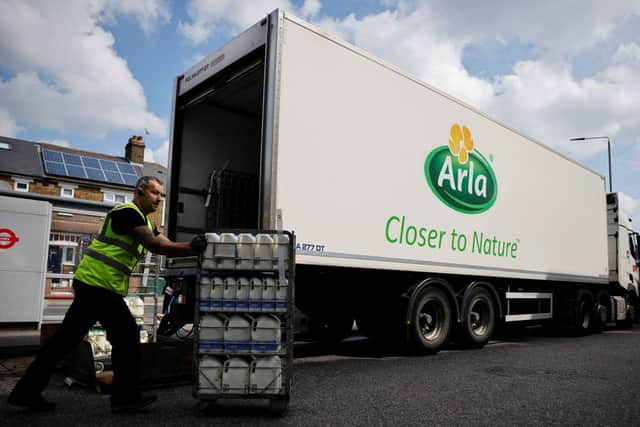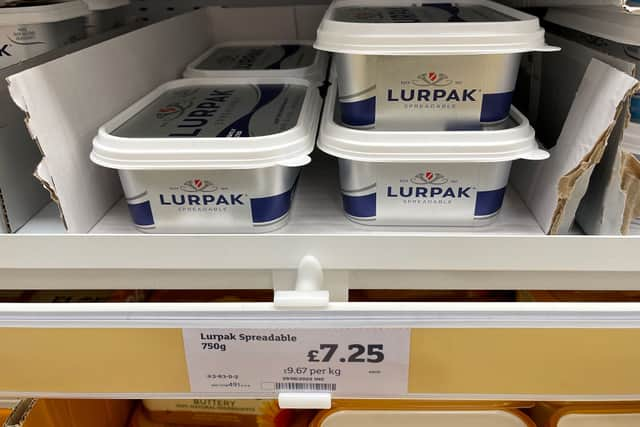Lurpak butter price: how much is Lurpak Spreadable in Tesco, Asda, Sainsbury’s - why is Lurpak so expensive?
and live on Freeview channel 276
The UK cost of living has risen to a four decade high in recent months, while wages have fallen back at a record rate.
It has left millions of households in Britain struggling to stay afloat, with worse set to come when the new Ofgem energy price cap is enforced in October 2022.
Advertisement
Hide AdAdvertisement
Hide AdDriven by the Russia-Ukraine war and a rocketing energy prices, food production and manufacturing costs have soared and forced up food prices.
While supermarkets have fought back against some of these increases being passed on to their shoppers, price hikes have been felt at almost all retailers.


One of the biggest shocks was when the extent of Lurpak price rises became clear.
But what has the butter brand said about the price hikes - and how much more does Lurpak cost now?
How much has Lurpak butter price risen?
Advertisement
Hide AdAdvertisement
Hide AdLurpak is the UK’s largest butter brand, worth nearly £400 million according to NielsenIQ data compiled for trade magazine The Grocer.
However, it has been unable to absorb its cost increases, if its shelf prices are anything to go by.
Here’s how much packs of its Spreadable Slightly Salted 500g butter currently cost at the UK’s ‘big four’ supermarkets:
- Tesco - £4.49 (£8.98 per kilogram) - or £4 if you have a Clubcard
- Sainsbury’s - £5 (£10 per kilogram)
- Asda - £5 (£10 per kilogram)
- Morrisons - £4.99 (£9.98 per kilogram)


Until very recently, the price for this kind of tub typically sat around £3.65, meaning that prices have gone up by as much as 27%.
Advertisement
Hide AdAdvertisement
Hide AdCurrently, the only supermarket keeping Lurpak close to its former price is Waitrose, where 500g packs cost £4 - although this is due to a £1 off offer.
Larger tubs of Lurpak also appear to have risen in price through shrinkflation - where pack sizes are reduced but prices remain relatively static - with Steve Dresser, CEO of retail advisory firm Grocery Insight, pointing out that 1kg tubs have been reduced to 750g in size in at least one major supermarket.
These tubs are now routinely costing consumers around £7 - something which has spawned surprise on social media.
Why has the Lurpak butter price risen?
As with almost every other brand across the food and drink spectrum, Lurpak has been hit by food price inflation.
Advertisement
Hide AdAdvertisement
Hide AdEarlier in 2022, Arla - the cooperative that owns the Lurpak brand - said it was “calling time on cheap milk” as a result of increases in production costs for its farmer members.
Explaining Lurpak’s price hikes, a spokesperson for the dairy said: “Unfortunately, our farmers are facing a similar situation with prices for the feed, fertiliser and fuel they need to produce milk, all rising significantly in recent months.
“We understand that recent inflation in food prices is hitting many households really hard right now.


“While we don’t set the prices on the shelves, we do work closely with the retailers to ensure our farmers receive a fair price for the milk they produce.
Advertisement
Hide AdAdvertisement
Hide Ad“Prices on the shelves have had to rise in recent months to ensure our farmers can continue supplying the products that we all enjoy.”
Arla has since told the BBC that it expects dairy prices to remain high, as it expects the second half of 2022 to be “even more challenging”.
The dairy supplier said high prices would be ”sustained” as soaring production costs cause a decline in global milk production.
It said fertiliser prices had increased by an average of 145%, fuel had risen by 134%, feed by 36% and energy by 346% compared to 2021.
Advertisement
Hide AdAdvertisement
Hide AdThe effect of shelf-price rises could be seen in its revenues, which grew 17% during the first six months of the year.
However, its pre-tax profits only grew by 9% - giving it a profit margin of 3.7%.


Russia’s invasion of Ukraine has pushed up the price of these key farm inputs because the two countries are major producers of many key ingredients and commodities.
Ukraine is one of the world’s biggest growers of the grain and oilseed crops that go into animal feed.
Advertisement
Hide AdAdvertisement
Hide AdGiven the war has seen lower than usual volumes of these crops exported, global prices have soared as markets have had to look for alternative sources for them.
Meanwhile, Russia is one of the world’s largest oil and gas producers, as well as a key source for the main building blocks of fertiliser.
Sanctions packages against Vladimir Putin’s regime have halted, or threatened to halt, the supply of these commodities, which has driven prices up.
Comment Guidelines
National World encourages reader discussion on our stories. User feedback, insights and back-and-forth exchanges add a rich layer of context to reporting. Please review our Community Guidelines before commenting.
